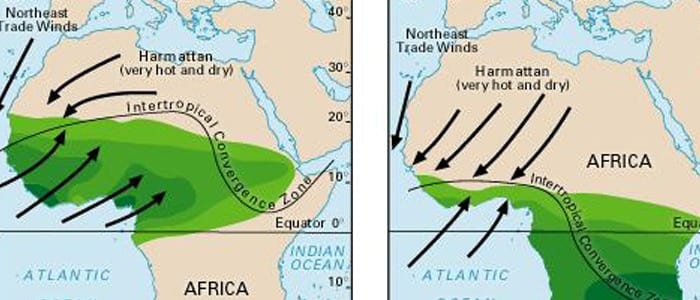For the next week, through January 29th, 2024, dust-free days are forecast to continue across the Lesser Antilles, including T&T. However, by the evening of the 29th, mild to moderate dust concentrations are forecast to begin moving across T&T into February.
What you need to know
— Saharan Dust Surges: From late January 29th, 2024, a mild to moderate Saharan Dust concentration surge is forecast to move across Trinidad and Tobago, spreading across the Lesser Antilles. Peak concentrations are forecast on January 31st into February 1st.
— Impacts: Over the next seven to ten days, air quality across Trinidad and Tobago is forecast to remain between good and occasionally moderate levels.
— What Should You Do: Unusually sensitive groups are advised to take the necessary precautions, particularly during high traffic and in the vicinity of fires.
Current AQI Levels Across T&T
The official air quality monitoring stations from the Environmental Management Agency (EMA) at Point Lisas, San Fernando, Beetham, Port of Spain, and Arima report good air quality levels. As of Monday afternoon, the station at Signal Hill, Tobago, is not reporting PM2.5 or PM10 data.
These measurements are based on PM2.5 (particulates the size of 2.5 micrometers and smaller, usually associated with increases in Saharan Dust, vehicle exhaust, and smoke) and PM10 particulates.
Over the last 24 hours, visibility remained unaffected by Saharan Dust and smoke at the A.N.R. Robinson International Airport at Crown Point, Tobago, and at the Piarco International Airport, Trinidad.
Saharan Dust Forecast

No Saharan Dust is forecast to be present across Trinidad and Tobago over the next five to seven days.
However, longer-range models show a surge of Saharan Dust arriving across T&T and the Windwards from late January 29th, 2024, with increasing concentrations (mild to moderate). The initial peak of this upcoming dust event is forecast between January 31st and February 1st.
Through the next seven days, air quality levels across Trinidad and Tobago are forecast to remain between good and occasionally moderate. From day eight through 10, air quality is forecast to be moderate. Air quality may be further reduced near bush or landfill fires or during high-traffic periods.
While no Saharan Dust is forecast to be present during the next week, haze is still possible through the forecast period. Haze is a suspension in the air of extremely small, dry particles invisible to the naked eye and sufficiently numerous to give the air an opalescent appearance.
What does this mean for you?


The surges of dust during this time of year are due to the Harmattan, a season in the West African subcontinent that occurs between the end of November and the middle of March. During this season, a predominant northeasterly trade wind (dubbed the Harmattan Winds) blows from the Sahara Desert over Western Africa into the Gulf of Guinea.
During this period, a ridge of high pressure stays over the central Sahara Desert, and the Intertropical Convergence Zone (ITCZ) remains over the Gulf of Guinea. The Harmattan wind accelerates when it blows across the mountain massifs of Northwest Africa. If its speed is high enough and it blows over dust source regions, it lifts the dust and disperses it.

Dust that makes it into the upper levels of the atmosphere can then get transported across the Atlantic Ocean and affect the Eastern Caribbean. These Saharan Dust outbreaks tend to be milder in the Eastern Caribbean than the dust outbreaks.











